How to properly grow Trilogy f1 Dutch cucumber hybrid to achieve a good harvest
The Dutch cucumber hybrid Trilogy F1 has recently appeared on the market. Its distinctive features are early fruiting, high yield and pleasant taste. In this article, we will consider the characteristics of the hybrid, the advantages and disadvantages, as well as the features of its cultivation.
The content of the article
Description of cucumbers
Trilogy F1 - a young hybrid, which was developed by the Dutch company "Rijk Zwaan"... Zoned in the Central and Northwest regions. First generation hybrid, self-pollinating plant.
Fruit ripening occurs 39-41 days after planting. Trilogy F1 characterized as unpretentious, high-yielding and disease-resistant.
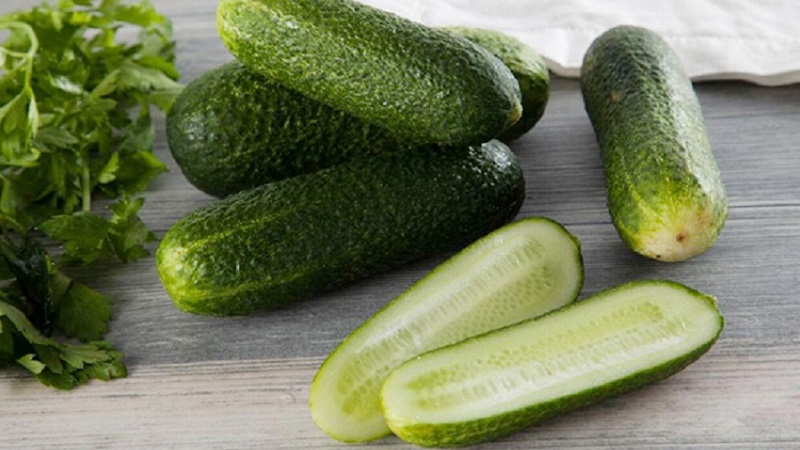
Distinctive features
The main characteristics of the hybrid:
- Stress-resistant... The yield is not affected by temperature drops, humidity and other weather conditions.
- Parthenocarpic... Unlike varieties, the fruits of this hybrid do not require additional pollination. The plant forms female flowers that form ovaries in the leaf axils.
- Indeterminate... Shoots reach up to two meters in height, but do not grow in breadth.
- High yielding... Reaches 320-650 c / ha.
- Disease resistant.
- Highly transportable... The fruits can easily be transported over long distances. This quality allows Trilogy F1 to be grown commercially.
Composition and benefits
Cucumber contains vitamins A, B1, B2, B9 (folic acid) and C, iron, phosphorus, potassium, sodium, manganese, chlorine, chromium, copper, zinc, iodine, silver. Calorie content per 100 g of fresh vegetable - 18.4 kcal, salted - 11.2 kcal, pickled - 16.1 kcal.
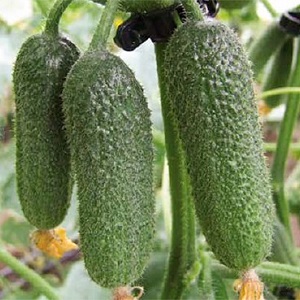 The nutritional value:
The nutritional value:
- proteins - 0.7 g;
- carbohydrates - 3.9 g;
- fats - 0;
- water - 95-97%.
The substances that make up the cucumber have such effect on the body:
- positively affect the functioning of the thyroid gland - due to the content of 0.003 mg of iodine;
- restore metabolism;
- reduce the risk of stone formation in internal organs - due to the large amount of alkaline salts;
- normalize blood pressure - due to the high potassium content (147 mg).
Keep in mind, if you have stomach diseases, this is a direct contraindication to the use of cucumbers.
Specifications
Low-growing plant with medium branching, with unlimited growth of the central trunk... Reaches 2 m in height or more. Fruits grow on the main trunk, lateral shoots do not bear fruit.
Important! To slow down growth, it is necessary to pinch the shoots.
The hybrid is self-pollinating, so the flowering is stable and the yield is high. 3-4 ovaries can appear in one leaf sinus.
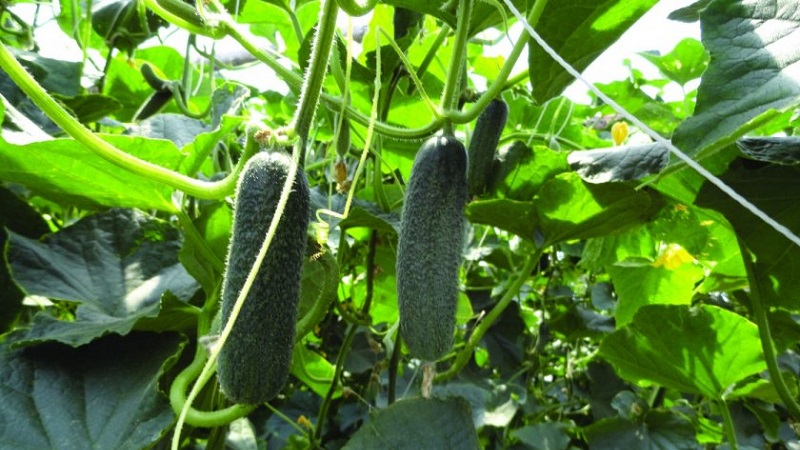
The fruit has a cylindrical shape of dark green color... Length - about 10 cm, weight - 60-80 g. On the skin there are spots and medium pubescence, the surface is small tuberous, the thorns are white. The yield reaches 320-650 kg / ha.
Fruit have a crispy, juicy flesh without bitterness... The skin is not rough, without much taste. Harvesting is carried out when the fruits take on the appearance of gherkins.
Hybrid universal in use... Cucumbers are great for use in food both fresh and in canned.
Important! Trilogy is great for canning.
How to grow yourself
Grow a hybrid by seedling and seed methods... It grows well both outdoors and indoors.Plants do not like heavy soils, so they are planted mainly in sandy loam. The recommended ground temperature is + 15-17 ° С.
Good predecessors - onions, carrots, peppers, cabbage... Do not plant cucumbers after pumpkin, because there is a high risk of contracting "family" diseases and pests.
Planting by seed and seedling method
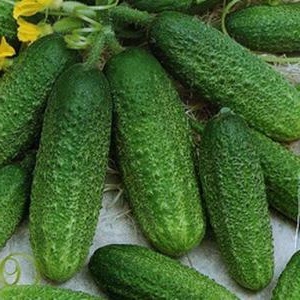 Seedling starts in mid-April... Due to the poor transplantation tolerance, the cucumbers are sown immediately in separate containers. For growing seedlings, light and moisture-absorbing soil is used with the addition of compost. After filling the vessel with soil, it is watered and one seed is placed in each of the moist soil.
Seedling starts in mid-April... Due to the poor transplantation tolerance, the cucumbers are sown immediately in separate containers. For growing seedlings, light and moisture-absorbing soil is used with the addition of compost. After filling the vessel with soil, it is watered and one seed is placed in each of the moist soil.
After that, cover with a layer of soil 1-2 cm. At first, watering is carried out carefully — it is recommended to use a spray bottle. The seedlings are removed to a warm, lighted place, where the temperature is maintained at + 25-28 ° C, and covered with glass or film.
After the emergence of seedlings, the covering material is removed, and the temperature is lowered by about 10 ° C and so left for five days.
Important! If this is not done, the seedlings will stretch out and be weak.
After the appearance of 2-3 full-fledged leaves, the seedlings are planted in open ground... This is done in early May, in rows prepared in advance. It is recommended to leave the distance between the future bushes of the Trilogy F1 hybrid at 40-50 cm. The seeds are laid out in moist soil to a depth of 1.5-2 cm and sprinkled with earth carefully.
To maintain heat and retain moisture, the bed is covered with foil.If you follow the rules of care, fruiting begins on average after 40 days. after sowing.
Growing in stages and care
 Plants require constant attention after sowing.Standard care includes:
Plants require constant attention after sowing.Standard care includes:
- Timely watering... It is carried out in the evening, with warm water, once every three days.
- Weeding - as the weeds grow.
- Loosening - between waterings.
- Top dressing... Fertilizers are applied in liquid form and the procedure is combined with watering. The hybrid responds well to poultry manure solution and mineral complexes. During the growing season, Trilogi cucumbers are fed 5-6 times with an interval of two weeks.
In hot, long weather, use a shading material.Harvesting is carried out from June to September.
Features of cultivation and possible difficulties
One of the features of a hybrid is its indeterminacy.... Therefore, many inexperienced summer residents have difficulties with the correct formation of plants, which has a great impact on the volume of the crop.
First of all, the main shoot should be tied up by a trellis, remove the side stepsons, leaving only the ovaries. At a height of up to 50 cm from the ground, not only lateral shoots are cut off, but also ovaries.
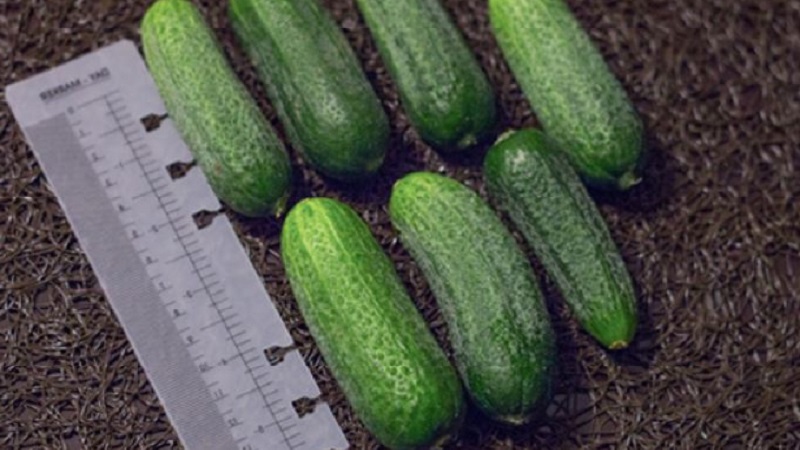
When the central shoot grows to a trellis, it is neatly wrapped around it and pinched after 50-100 cm, leaving 2-3 lateral shoots in the nodes at this interval. The left shoots of the first and second order are pinched after the fourth leaf. The plant regulates the number of ovaries on them independently.
Important! Self-pollinating cucumber hybrids should not be grown next to vegetables pollinated by bees.
Diseases and pests
Cucumber hybrid Trilogy F1 is resistant to:
- brown spot (cladosporium);
- cucumber mosaic virus;
- powdery mildew.
Medium resistant hybrid to peronosporosis.
 For the prevention of diseases and damage by pests,:
For the prevention of diseases and damage by pests,:
- follow the rules of agricultural technology;
- weed plants regularly;
- do not place new crops next to old ones;
- sanitize agricultural equipment;
- destroy rejected cucumbers and green mass.
remember, that plants are more likely to get sick when growing them for several years in a row in the same place.
If prevention hasn't helped, and the leaves began to turn yellow and dry, then the dead parts of the plant are removed and burned, and the rest is treated with the fungicide "Ridomil", "Kurzat" or a 0.5% solution of Bordeaux liquid.
Common pests of cucumbers — spider mite, aphid, thrips. They use Aktellik, Talstar and other drugs against them. The biological product "Aktofit" is also effective against spider mites (its maximum efficiency is at temperatures above + 18-20˚С).
Important! When growing cucumbers in a greenhouse, it is regularly ventilated, since high temperature and humidity stimulate the appearance of diseases.
Harvesting and application of the crop
Trilogy F1 hybrid - early maturing. It takes 39-41 days to form fruit.... The fruits ripen at about the same time, so they are harvested every other day.
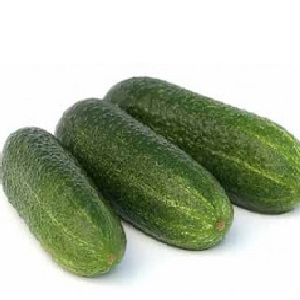 To preserve the presentation, the fruits should:
To preserve the presentation, the fruits should:
- store in a cool dry place at temperatures from 0 to + 4 ° С;
- avoid temperature drops;
- take fresh, whole specimens for storage without damage or signs of decay;
- store in sand boxes or disposable bags.
The hybrid is great for canning and pickling. The fruits have an average thickness of the skin, therefore they are quickly saturated with brine, which is why they turn out to be crispy when salted and pickled.
Advantages and disadvantages
Benefits of the Dutch hybrid:
- high productivity;
- simultaneous ripening of fruits;
- disease resistance;
- high stress resistance;
- self-pollination;
- early ripening.
Trilogy F1 has few drawbacks:
- the risk of peronosporosis;
- complex plant formation.
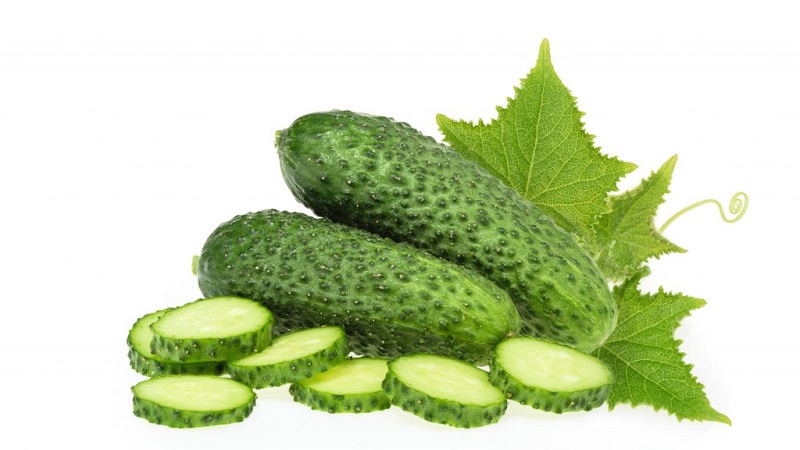
Reviews
Numerous reviews of summer residents characterize the hybrid as high-yielding and disease-resistant.
Vera, Yaroslavl: “Gathered 4 kg from a bush. The cucumbers grew all small and plump, with small, frequent tubercles. Dense pulp and no holes formed in it when salted. Excellent taste both fresh and canned. After the season, she identified several shortcomings: it is difficult to form a bush, susceptible to changes in air temperature. There are more advantages: excellent taste and appearance, good yield, dislike for frequent watering, resistance to most diseases ".
Love, Ryazan: “This is not the first year I have been planting a hybrid. I give him the first place after Masha and Herman. Very early, the fruits are tasty, even, if they outgrow, then there are no large ones. Late blight does not get very sick, very hardy. One drawback is its price. ".
Conclusion
Trilogy F1 cucumber hybrid is easy to grow on your own. The main thing is to follow the rules of agricultural technology and be attentive to the plants so that they grow healthy and give a rich harvest.
Numerous reviews about him fully confirm the stated characteristics. The hybrid is unpretentious, high-yielding and disease resistant. We advise you to try to grow it on your site!